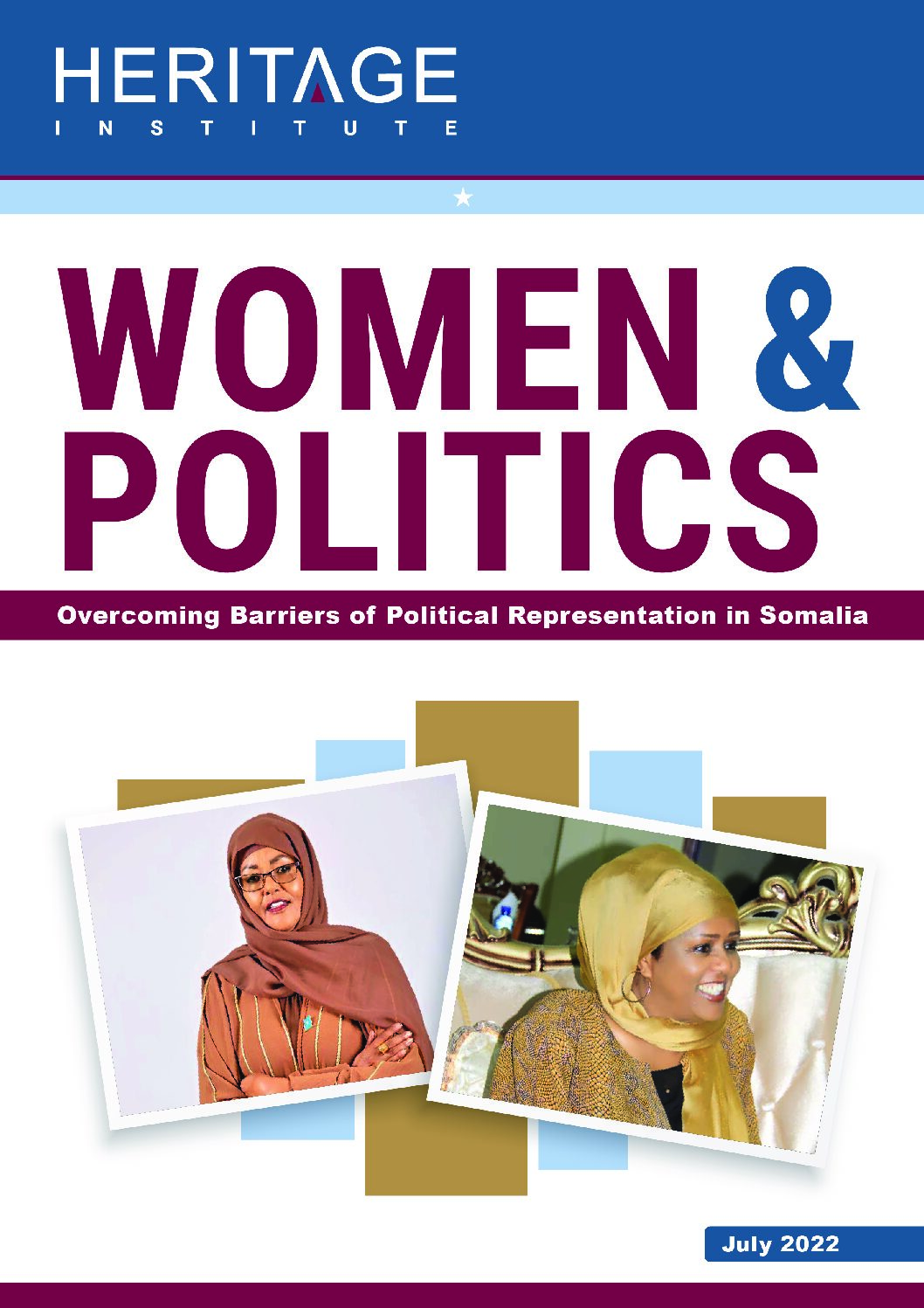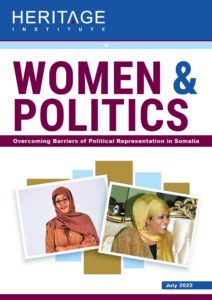
WOMEN & POLITICS: Overcoming Barriers of Political Representation In Somalia

Generally, Somali women have been under-represented at all levels of government administration since the Somali Republic was established in 1960. In 2012, As Somalia ended the transition period, women were promised 30% representation in all sectors of government. Yet this remains a gentlemen’s agreement and the gender quota remains
excluded from the provisional constitution. This lack of incorporation of the gender quota is reflected in the uneven representation of women in parliament in the last three indirect elections, in 2012 (14% representation); 2016 (24% representation), and 2021/22 (20% representation). Combining a survey and interviews, this research examined the public perception of
women’s political participation as well as the opportunities and challenges they face in their pursuit of political representations. The survey was carried out in seven large urban cities across Somalia (Kismayo, Baidoa, Mogadishu, Beledweyne, Galkayo, Garoweand Bosaso) to determine the societal views on gender quota and women’s political participation and obtained 1,000 responses.
Download the full report here.
Guud ahaan, dumarku way ku yar yihiin heerarka dawladda illaa iyo Jamhuuriyaddii Soomaaliya ee 1960. 2012, markii ay Soomaaliya ka baxday kumeelgaarnimada waxa haweenka loogu ballanqaaday in boqolkiiba soddon qoondo ah laga siinayo dhammaan haayadaha dawladaha. Balse, aarrintaasi wali waxay taagan tahay is-afgaradkii lagu heshiiyay, qoondadii haweenkana laguma darin dastuurka qabyada ah ee Soomaaliya. Sharci la’aanta qoondada haweenka waxa ka turjumaysa kala duwanaanta dumarka ku soo baxay baarlamaanka, saddexdii ugu danbeeyay doorashooyinka dadbanaa, iyaga oo sannadkii 2012 haweenku helay 14% kursi; 2016-na helay 24% kursi, halka ay 20% kursi ka heleen 2021/22.